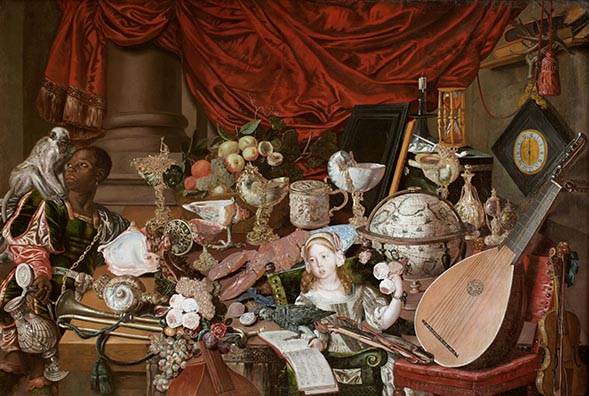
On Friday, May 19 and Saturday, May 20, I attended a variety of panels at the “From Bodies to Things” conference organized at the Clark Library by Tawny Paul and Andrew Apter of UCLA. The conference was organized in order to study the commodification of the body in the early modern period, a topic, the organizers emphasized, that is rarely studied across regions and across disciplines. In order to pursue this broad geographic and disciplinary topic, the organizers brought together scholars working on issues throughout the Atlantic world, from Europe to the Caribbean. The goal of the conference was threefold. The first goal was to break open the “freedom/unfreedom binary” that the organizers stressed proliferates in Atlantic studies. The second was to highlight the “fluidity between objecthood and personhood” in this period. The final goal was to underscore the importance of the body in the creation and the exchange of surplus value. I attended in part to finish up my conference requirements for the early modern certificate and in part because of my interest in political economy, something I am not often exposed to working in a comparative literature department. Ever since studying at the Stockholm School of Economics for a term as an undergraduate, I have attempted to at least infuse my literary studies with historical and economic theory to contextualize the literature I write about. For this reason, I felt attending the conference would give me some much-needed exposure to extra-literary scholarship on the early modern and illuminate a topic so close to my interests: the body and commodification. These interests surface in my studies of the political and economic exchange between Spain and Mexico in the 16th and 17th centuries and my (as yet unrelated) interest in embodiment, as I have studied everything from the body’s experience of space in Nahua and Spanish cosmovisions to smell in conquest narratives. As of yet, I have not been able to marry these two interests together, but attending this conference helped me begin that process, even if the presentations I saw were not literary in nature.
While attending the conference, I was able to hear Herman Bennett’s (The Graduate Center CUNY) paper on the importance of names for freed slaves in the early modern period. Bennett highlighted two cases: one of a man who decided to reject the name his former masters called him and another who embraced the name of his past enslaved life. I was also able to attend Lisa Cody’s (Claremont McKenna College) talk, in which I learned more about the Anglo context of labor commodification than I had before, considering I work in Hispanophone and Francophone contexts. I was especially interested in what Dr. Cody shared about Benjamin Franklin’s ideas on controlling the influx of labor in the American colonies, which included excluding all “tawny blacks” from immigrating to the United States. The surprising part of this proposition was that these racialized people included Africans, Southern Europeans, and even Swedes. In fact, Franklin only included Anglo-Saxons in the labor force he wanted to see in the Anglo-American colonies.
Finally, I attended Sasha Turner’s (John Hopkins) presentation. I was especially struck by Dr. Turner’s paper because it discussed midwifery, slavery, and payment in the early modern Caribbean. Dr. Turner discussed a practice of paying enslaved midwives for their midwifery services that increased over the course of the 18th century in the Caribbean. The payment was motivated by at least two important factors: first was that these payments were often paid out in the form of rum, as the plantation owners had an excess of it. Therefore, payment was a means to offload a product that would not be able to be sold in foreign markets. The second factor was even more disturbing, because, with the eventual banning of the slave trade at the beginning of the 19th century, slaveowners came to see their slaves as an ‘investment’ that needed to reproduce. In order to protect their human ‘investments,’ they were willing to hire an enslaved midwife for a nominal fee. To this already complex logic, Dr. Turner added that changing ideas about femininity and race (were women of African descent just as fragile as white women and so therefore needed protection during childbirth?) also played a factor in the emergence of this practice.
-Rebecca Smith, doctoral student, Comparative Literature UCLA
The Paston Treason, anonymous, (c. 1670). Norwich Castle Museum. Wikimedia.

